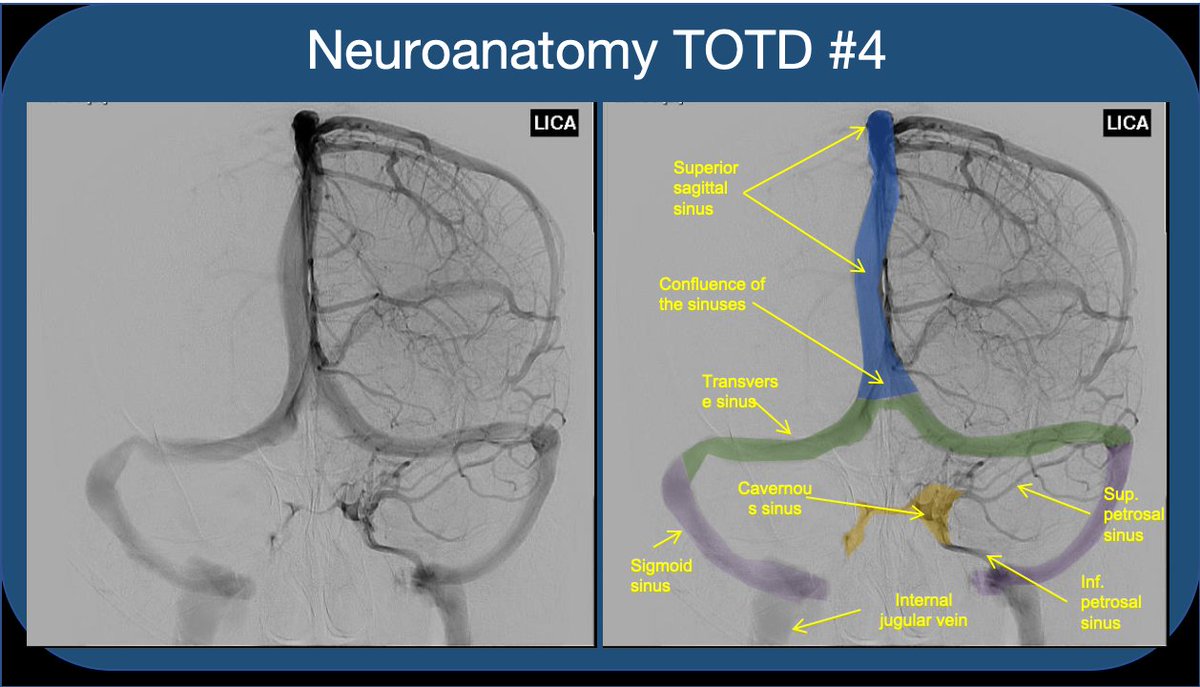
Neuroanatomy TOTD #2:
Answer: Fetal PCA
1/3 A fetal PCA, or fetal origin of the PCA is a common variant, estimated to be present (at least on one side) in about a quarter of individuals.
Answer: Fetal PCA
1/3 A fetal PCA, or fetal origin of the PCA is a common variant, estimated to be present (at least on one side) in about a quarter of individuals.

2/3 The term is used variably, when the bulk of PCA flow comes from the anterior circulation (internal carotids) via a robust post. communicating artery. Some reserve the term for when there is no connection to the posterior circulation (absent P1 segment from the basilar art.), 

3/3 ...while others use the term any time the Pcomm is the dominant supply to the PCA, (rather than the basilar and P1 segment). Note that when fetal PCA is bilateral, the vertebral and basilar arteries are usually diminutive, terminating in superior cerebellar arteries. 

4/3 Clinically, it is important to know when there is a fetal PCA, as an embolic infarct in the occipital lobe would be related to the anterior circulation in this setting. It also may affect approach and feasibility for an intravascular versus surgical intervention of aneurysm.
• • •
Missing some Tweet in this thread? You can try to
force a refresh















